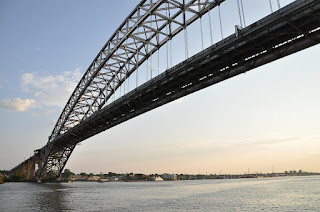 |
| Dave Durham posted CM&St.P, Byron, Illinois, 1899 Laird Barber It was a double track line until the late 1970's when it was single tracked by the MILW Road, and is now owned by the Canadian Pacific. |
 |
| Public Domain via 1897 Bridge Hunter |
 |
| Steve Conro via 1905+? Bridge Hunter |
 |
| Jeff Lewis posted Canadian Pacific twin truss spans cross the Rock River just east of Byron, Illinois. The twin cooling towers of the Byron Generating Station loom to the south as steam billows into a cloudy August afternoon. Aerial photography courtesy of Jennelle Smith. August 17, 2020 Flickr1 |
 |
| Jeff commented on his post Flickr2 |
The only customer for this bridge is going to disappear.
 |
| safe_image for Exelon Generation to Retire Illinois’ Byron and Dresden Nuclear Plants in 2021 Despite being among the most efficient and reliable units in the nation’s nuclear fleet, Dresden and Byron face revenue shortfalls in the hundreds of millions of dollars because of declining energy prices and market rules that allow fossil fuel plants to underbid clean resources in the PJM capacity auction, even though there is broad public support for sustaining and expanding clean energy resources to address the climate crisis. The plants’ economic challenges are further exacerbated by a recent FERC ruling that undermines longstanding state clean energy programs and gives an additional competitive advantage to polluting energy sources in the auction. As a result of these market rules, Exelon Generation’s LaSalle and Braidwood nuclear stations in Illinois, each of which house two nuclear units and together employ more than 1,500 skilled workers, are also at high risk for premature closure. Studies have shown that when nuclear plants close, plants that burn fossil fuels operate much more often, increasing harmful carbon and air pollution, especially in disadvantaged communities. In January 2019, Illinois committed to reducing greenhouse gas emissions consistent with the targets set in the Paris climate agreement. While the state is currently at roughly 85 percent progress towards the 2025 goal, if the four economically challenged nuclear plants (Dresden, Byron, Braidwood and LaSalle) prematurely retire, Illinois will drop to only 20 percent of the way toward the goal. Electric sector emissions in Illinois will increase by 70 percent. |


























































